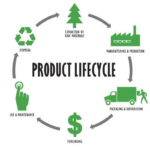Ensuring workplace safety is not just a moral and legal obligation for businesses; it is also a critical component of a successful and sustainable operation. Workplace accidents can result in serious injuries, costly litigation, and damage to a company’s reputation. Therefore, adhering to safety compliance standards is paramount. This comprehensive checklist outlines key areas every business should focus on to maintain a safe working environment.
1. Understand and Implement OSHA Standards
The Occupational Safety and Health Administration (OSHA) sets and enforces safety standards to ensure safe and healthful working conditions. Familiarize yourself with OSHA regulations applicable to your industry and ensure your workplace meets these standards. This includes providing adequate training for employees, maintaining proper records of injuries and illnesses, and ensuring that safety procedures are updated and adhered to.
2. Regular Safety Training
Ongoing training is crucial to workplace safety. Employees should be educated on the specific hazards of their jobs, how to prevent accidents, and what to do in an emergency. This training should be conducted regularly and updated to reflect any changes in procedures, equipment, or regulations. Encouraging a culture of safety and making training sessions engaging and informative can significantly reduce workplace incidents.
3. Emergency Preparedness
Every workplace must be prepared for emergencies, including fires, natural disasters, and medical crises. This involves having a clear and practiced evacuation plan, accessible emergency exits, and well-marked escape routes. Additionally, having first aid kits and trained personnel on-site can make a critical difference in the event of an injury. It’s essential to review and drill these procedures regularly to ensure everyone knows what to do in an emergency.
In this context, while discussing equipment readiness, it’s pertinent to mention the importance of fire safety. For many businesses, especially those in temporary locations or undergoing renovations, fire extinguisher hire provides a flexible and cost-effective solution to ensure that the premises are equipped with necessary fire-fighting equipment. This option allows companies to maintain high safety standards without the upfront investment in purchasing equipment, ensuring that every area of the workplace is covered and compliant with fire safety regulations.
4. Regular Inspections and Maintenance
Conducting regular safety inspections can help identify potential hazards before they lead to accidents. This includes checking machinery and equipment for wear and tear, ensuring that safety guards are in place, and verifying that chemicals are stored correctly. Preventive maintenance not only extends the life of equipment but also significantly reduces the risk of accidents caused by equipment failure.
5. Personal Protective Equipment (PPE)
Providing appropriate personal protective equipment (PPE) for employees is a fundamental requirement for workplace safety. Depending on the job, PPE may include items such as gloves, goggles, helmets, earplugs, and respirators. It’s crucial to ensure that all PPE is in good condition, properly fits each employee, and is used correctly.
6. Hazard Communication
Employees must be aware of the hazards present in their workplace. This includes being informed about the chemicals and substances they may be exposed to and understanding the associated risks. Proper labeling, safety data sheets (SDSs), and training are essential components of an effective hazard communication program.
7. Ergonomics
Poor ergonomics can lead to musculoskeletal disorders, such as carpal tunnel syndrome and back injuries. Implementing ergonomic solutions, such as adjustable chairs, ergonomic keyboards, and proper lifting techniques, can help prevent these types of injuries. Assessing workstations and workflows for ergonomic risks and making necessary adjustments is an ongoing process that can significantly improve employee well-being.
8. Mental Health and Well-being
Workplace safety also encompasses mental health. Creating a supportive work environment that promotes mental well-being is essential. This can include providing access to mental health resources, ensuring a reasonable work-life balance, and fostering a culture of respect and inclusion. Addressing mental health openly and providing support can help prevent burnout and stress-related illnesses.
9. Documentation and Record-Keeping
Maintaining accurate records is a critical aspect of workplace safety compliance. This includes documenting all training sessions, inspections, incidents, and corrective actions taken. Good record-keeping practices not only help in demonstrating compliance with safety regulations but also provide valuable information for investigating incidents and identifying trends or areas for improvement.
10. Foster a Culture of Safety
Ultimately, the most effective safety programs are those that create a culture of safety throughout the organization. This means that safety is not just the responsibility of the safety officer or management but of every employee. Encouraging reporting of hazards, recognizing safe behaviors, and involving employees in safety discussions can help foster a proactive approach to safety.
In conclusion, workplace safety compliance is a multifaceted issue that requires ongoing attention and commitment from all levels of an organization. By adhering to this checklist, businesses can create a safer environment for their employees, avoid costly accidents, and ensure they are in compliance with legal requirements. Remember, a safe workplace is not only a regulatory requirement but also a cornerstone of a thriving business.


